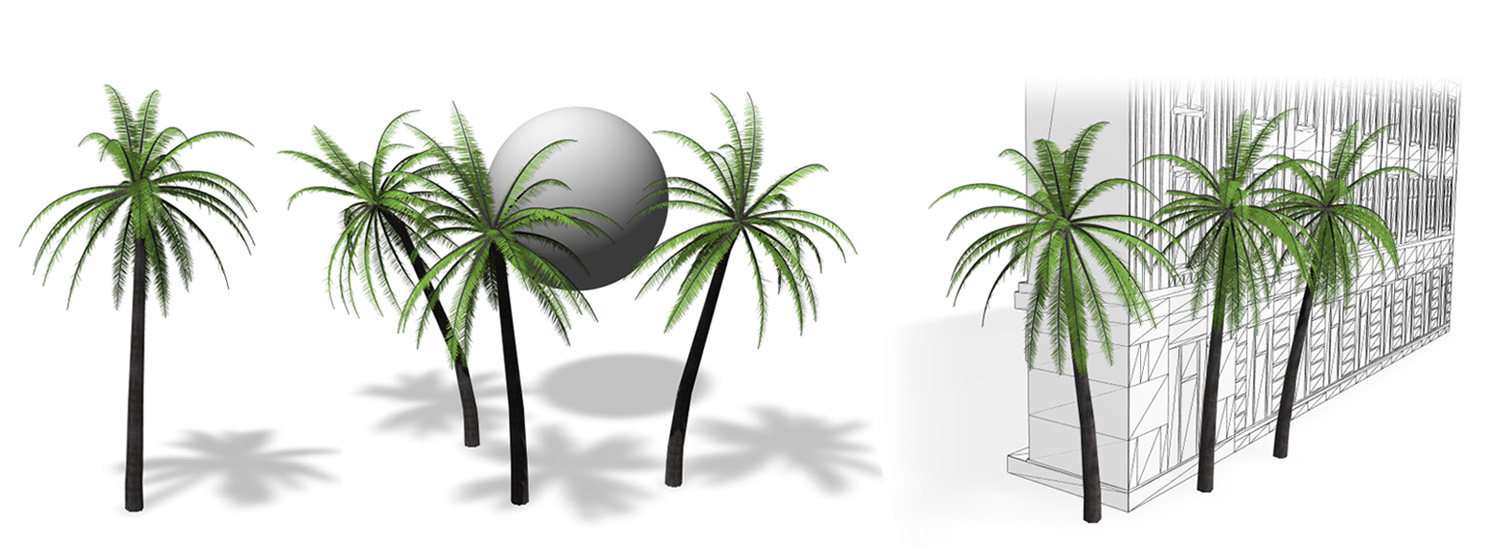
Abstract
We present a dynamic tree modeling and representation technique that allows complex tree models to interact with their environment interactively. Our method uses changes in the light distribution and proximity to solid obstacles and other trees to impose biologically motivated transformations on a skeletal representation of the tree's main branches and its procedurally generated foliage. Parts of the tree are transformed only when required, thus our approach is much faster than common algorithms such as Open L-Systems or space colonization methods. Input is a skeleton-based tree geometry that can be computed from common tree production systems or from reconstructed laser scanning models. Our approach enables content creators to directly interact with trees and to create biologically convincing ecosystems interactively. We present different interaction types and evaluate our method by comparing our transformations to biologically based growth simulation techniques.
Video
Bibtex
@article{Pirk:2012:PTI:2185520.2185546,
author = {Pirk, S\"{o}ren and Stava, Ondrej and Kratt, Julian and Said, Michel Abdul Massih
and Neubert, Boris and M\v{e}ch, Radom\'{\i}r and Benes, Bedrich and Deussen, Oliver},
title = {Plastic trees: interactive self-adapting botanical tree models},
journal = {ACM Trans. Graph.},
issue_date = {July 2012},
volume = {31},
number = {4},
month = jul,
year = {2012},
issn = {0730-0301},
pages = {50:1--50:10},
articleno = {50},
numpages = {10},
url = {http://doi.acm.org/10.1145/2185520.2185546},
doi = {10.1145/2185520.2185546},
acmid = {2185546},
publisher = {ACM},
address = {New York, NY, USA},
keywords = {generative tree modeling, interactive procedural modeling, visual models of trees},
}




